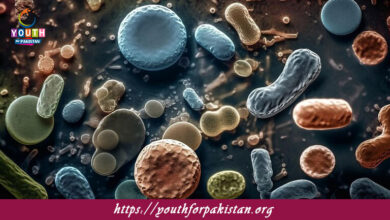Statistics And Probability Relevant To Genetics MDCAT Quiz

Statistics And Probability Relevant To Genetics MDCAT Quiz: In genetics, statistical methods and probability theory are essential for the prediction and analysis of the inheritance patterns of traits. These provide geneticists with the tools to calculate the probability of specific outcomes, such as the probability of inheriting certain genetic disorders or traits. For MDCAT students, understanding the basics of statistics and probability in relation to genetics is very important for solving problems related to inheritance, genetic crosses, and population genetics. The MDCAT Quiz on statistics and probability relevant to genetics will test your ability to apply these concepts to genetic problems, preparing you for the complex questions on the exam.
Probability in Genetic Crosses
Probability plays a huge role in genetic inheritance, especially in predicting the possibility of offspring inheriting certain traits. For example, it is in Mendelian genetics that the probability of inheriting any particular allele in a monohybrid cross can be worked out by using Punnett squares. So, for example, if two parents are heterozygous for some trait (e.g., Aa × Aa), then one can determine the probability of the offspring inheriting either a dominant (A) or recessive (a) allele by determining all the possible combinations of alleles. In this case, the phenotypic ratio would be expected to be 3:1—that is, there would be a 75% chance that the offspring would express the dominant phenotype and a 25% chance that the offspring would express the recessive phenotype. The MDCAT Quiz will test your ability to calculate the probability of various genetic outcomes in different types of crosses, including monohybrid and dihybrid crosses.
Statistical Analysis in Genetics
Statistics is applied to the analysis of genetic data, particularly in the study of large populations or genetic experiments. Measures like mean, median, and standard deviation are used to summarize and interpret genetic data, including gene frequencies and patterns of inheritance. For example, in the study of population genetics, one can apply the Hardy-Weinberg equilibrium equation to find the frequencies of alleles and genotypes in a population. This equation holds under conditions when the population is not evolving, enabling one to predict how gene frequencies will remain constant from generation to generation in an idealized population. The MDCAT Quiz will test your ability to apply statistical methods to genetic data and predict the genetic makeup of populations.
Punnett Squares and Statistical Predictions
Punnett squares can be a very useful tool in computing genetic probabilities. You can predict the possible genotypes and phenotypes of offspring resulting from different genetic crosses. For instance, you can work through, by using a Punnett square, the dihybrid cross between two heterozygous parents, YyRr × YyRr, to predict a phenotypic ratio of 9:3:3:1, based on the principle of independent assortment. In this scenario, you calculate the probability of each genotype and phenotype by filling out the Punnett square and analyzing it. So, MDCAT Quiz will train you on how to use Punnett squares to find genetic probabilities and predict outcomes for a variety of genetic crosses.
Chi-Square Test in Genetics
A Chi-square test, a statistical tool, is used in the comparison of observed genetic data to the expected ones, hence aiding in the determination of whether the observed outcomes fit the expected ratios or not. For instance, during a genetic cross, you observe a phenotypic ratio of 2:2 instead of the expected 3:1, a Chi-square test will help evaluate if this is due to random chance or there is another factor at play. That involves calculating the difference between observed and expected values, then squaring the result and finally dividing by the expected value in each category. This helps one evaluate the validity of the hypotheses in genetic studies. The MDCAT Quiz will test your understanding of how to use the Chi-square test to analyze genetic data and interpret experimental results.
Probability in Genetic Disorders
An example in which statistics and probability are important is the pattern of inheriting genetic disorders. In cases where a genetic disorder is caused by a recessive allele—such as cystic fibrosis—the probability of the offspring inheriting the disorder may be calculated, given knowledge of the parents’ genotypes. For example, if both parents are carriers (heterozygous) for a genetic disorder caused by a recessive allele, there is a 25% chance that any offspring will have the combination of alleles causing the disorder. Other genetic disorders, such as those caused by X-linked inheritance (e.g., hemophilia), follow different patterns of inheritance; again, statistical probability calculations help in predicting the likelihood of passing on the disorder to offspring. The MDCAT Quiz will test your abilities in the use of probability to predict the passing on of genetic disorders and estimating the likelihood of passing on genetic traits.
Quiz on Statistics and Probability in Genetics
Taking a MDCAT Quiz on statistics and probability in genetics will help you evaluate your understanding of how these concepts are used to predict genetic outcomes, analyze inheritance patterns, and calculate probabilities in genetic crosses. The quiz will cover topics such as Punnett squares, Chi-square tests, and the use of statistical tools in population genetics. Additionally, using Free Flashcards will help reinforce your understanding of these important concepts, ensuring that you are well-prepared to tackle genetics-related questions in your MDCAT exam.

The probability of a child inheriting two recessive alleles from two heterozygous parents is _______.
0.25

The probability of getting a heterozygous offspring in a cross between two heterozygous parents is _______.
0.5

The expected phenotypic ratio in a monohybrid cross between two heterozygous parents is _______.
0.12569444444444

The probability of two heterozygous parents producing an offspring with a homozygous recessive phenotype is _______.
0.25

The probability of a child inheriting an X-linked recessive trait from a carrier mother is _______.
0.5

The probability of obtaining a recessive phenotype in a cross between two heterozygous parents is _______.
0.25

The probability of an offspring inheriting a specific allele is determined by _______.
The laws of probability

The statistical method used to predict the likelihood of genetic outcomes in a cross is _______.
Punnett square

The probability of a child inheriting two dominant alleles from heterozygous parents is _______.
0.25

In a dihybrid cross between two heterozygous parents, the probability of obtaining a recessive phenotype is _______.
45673

The expected genotypic ratio from a test cross of a heterozygous parent with a homozygous recessive parent is _______.
0.042361111111111

The probability of an offspring inheriting a recessive trait from two heterozygous parents is _______.
0.25

The Chi-square test is used to determine whether the observed genetic ratios deviate from _______.
The expected ratios

In a monohybrid cross between a homozygous dominant and a homozygous recessive parent, the offspring will be _______.
All heterozygous

The phenotypic ratio of offspring in a cross between a homozygous dominant and a homozygous recessive parent is _______.
100% dominant

The probability of a child inheriting an autosomal dominant trait from a heterozygous parent is _______.
0.5

A monohybrid cross between two heterozygous individuals produces a phenotypic ratio of _______.
0.12569444444444

The principle of independent assortment applies to _______ during meiosis.
Non-homologous chromosomes
Experience the real exam environment with our expertly designed collection of over 25,000 MCQs MDCAT Mock Tests.





